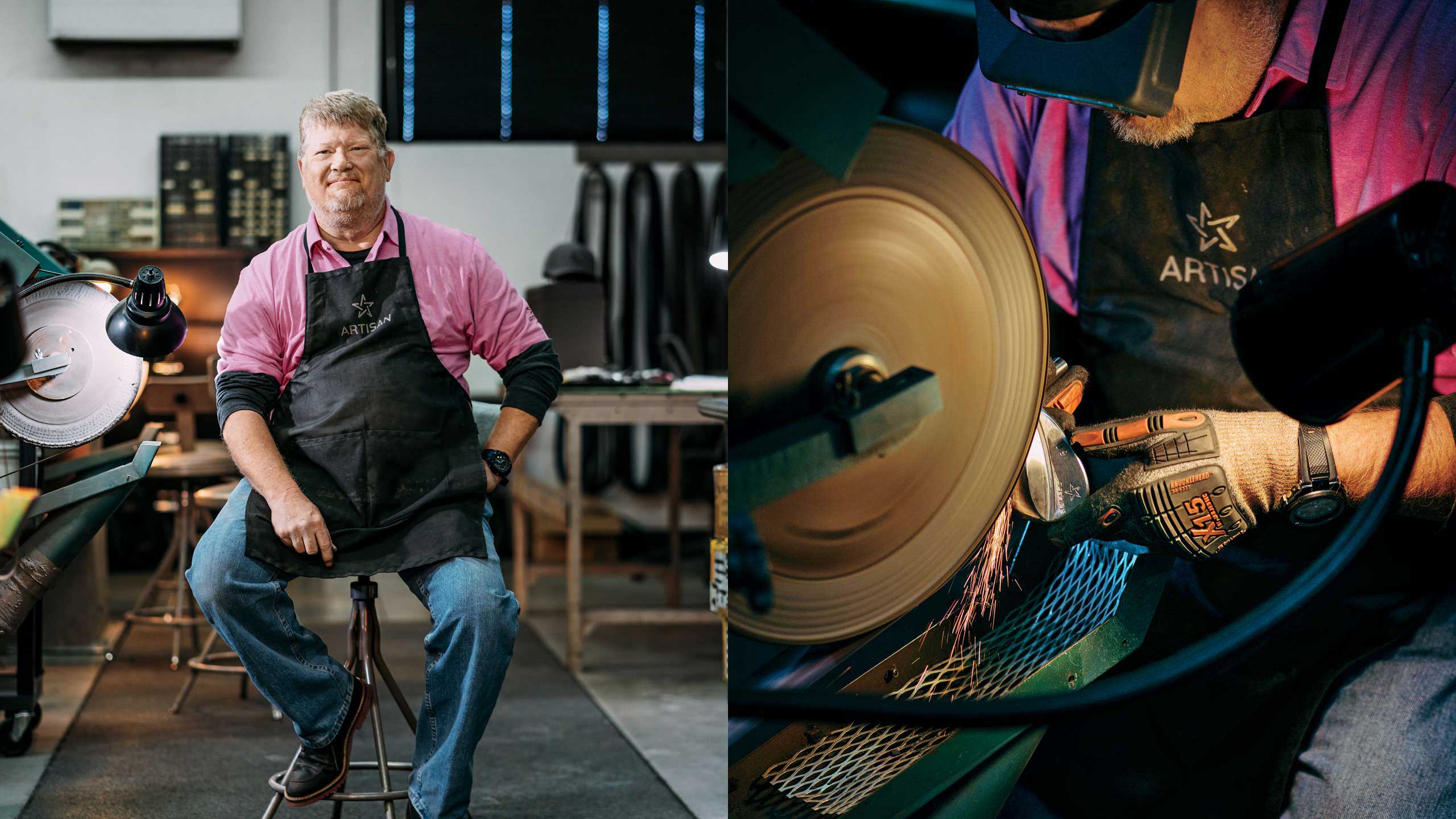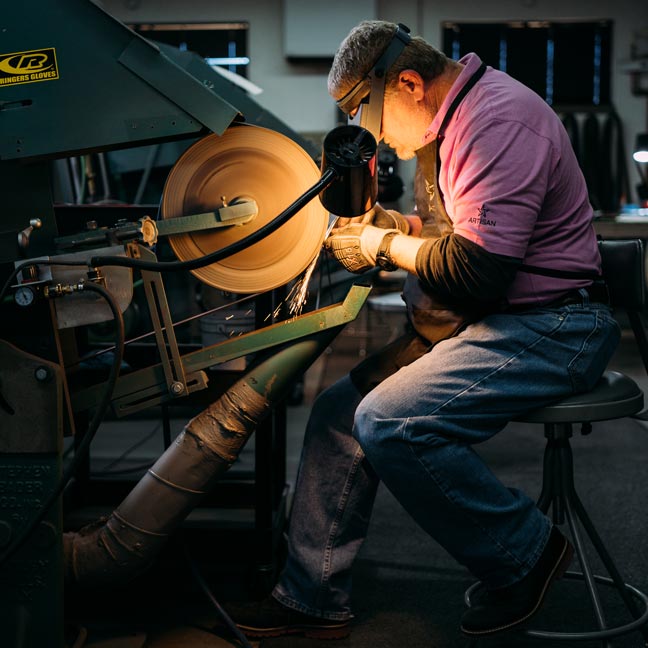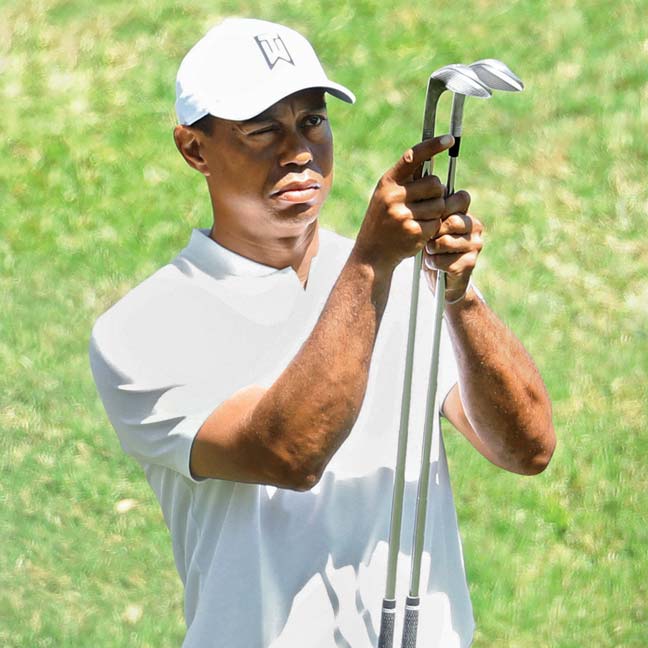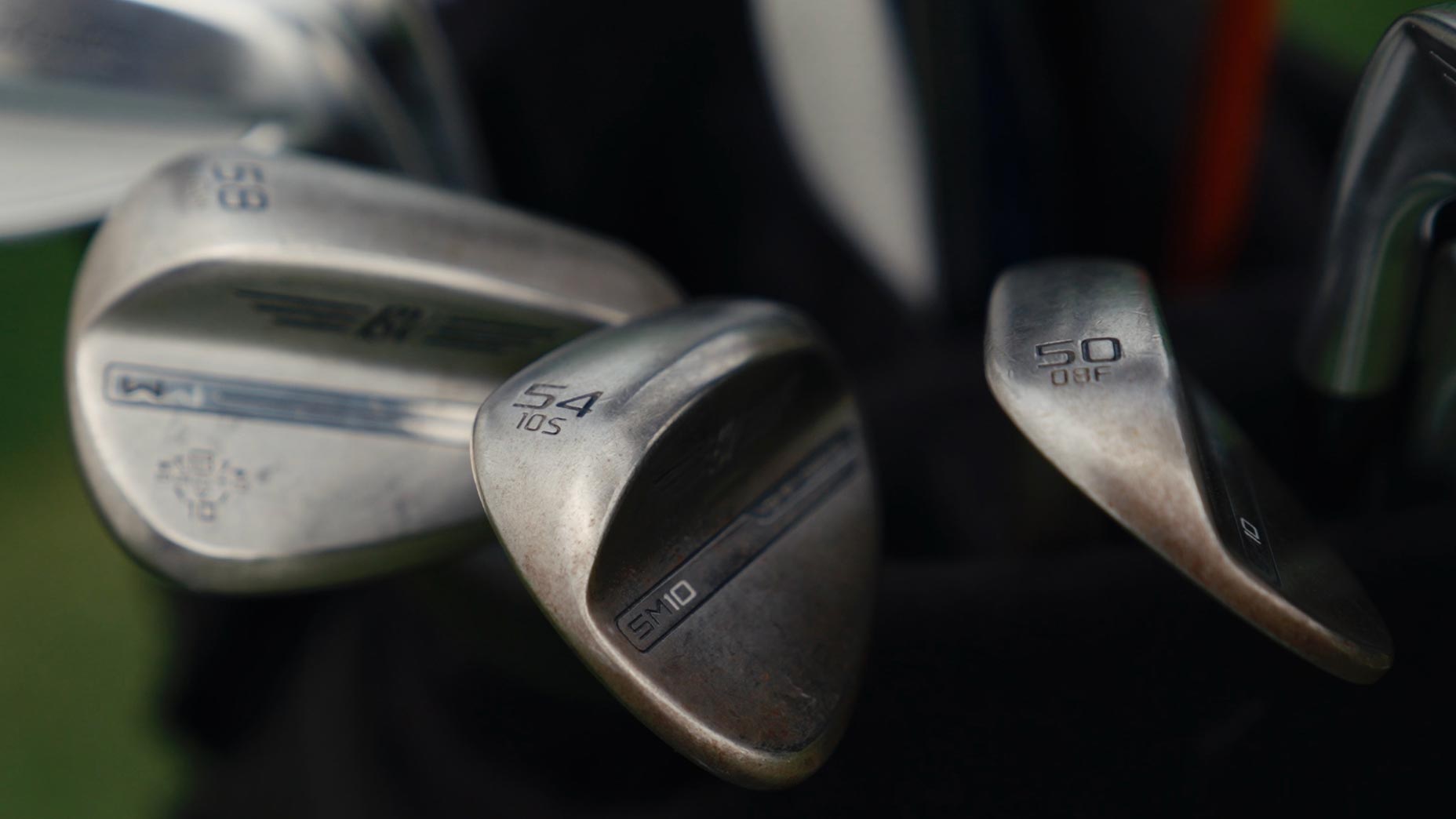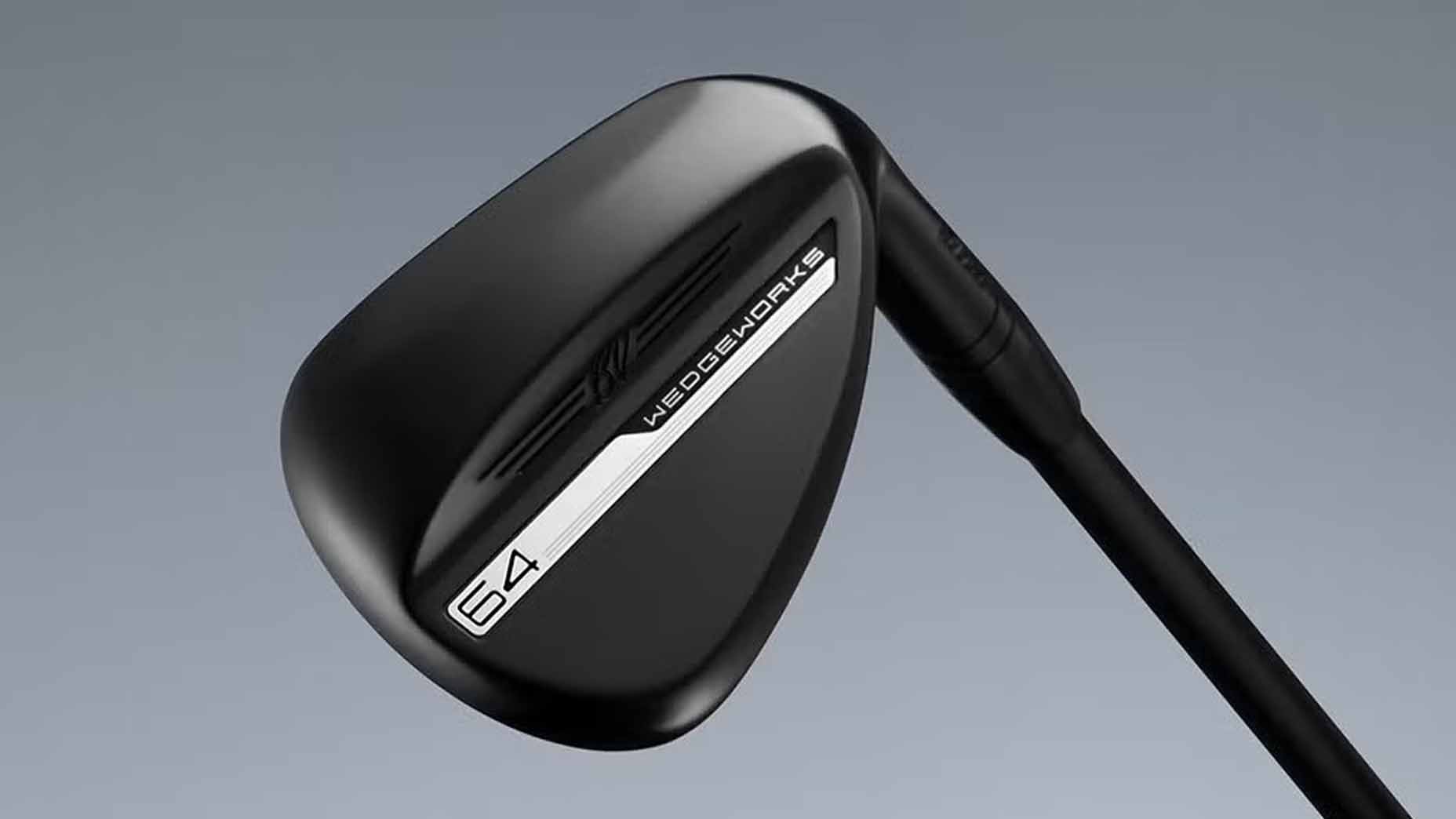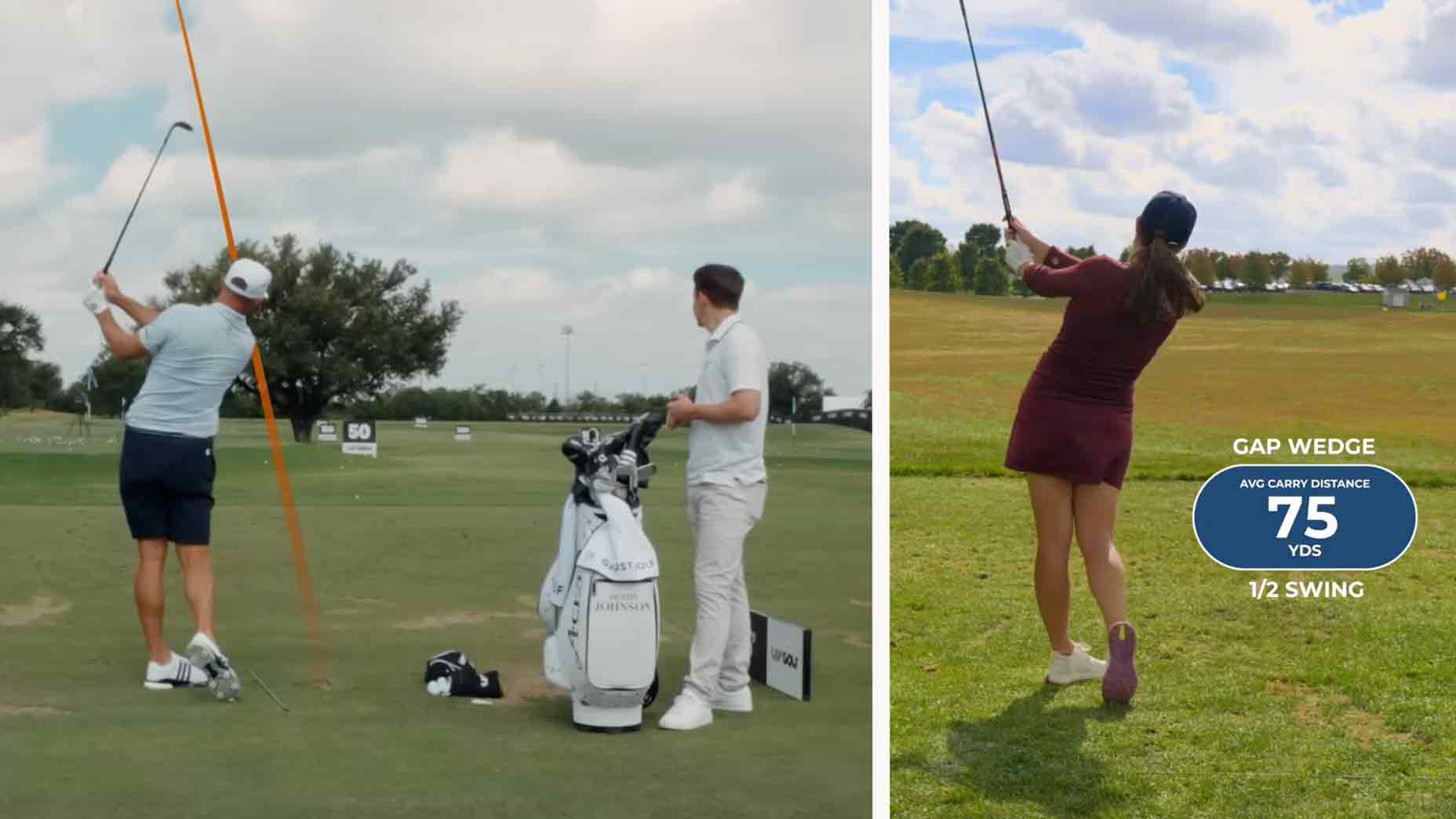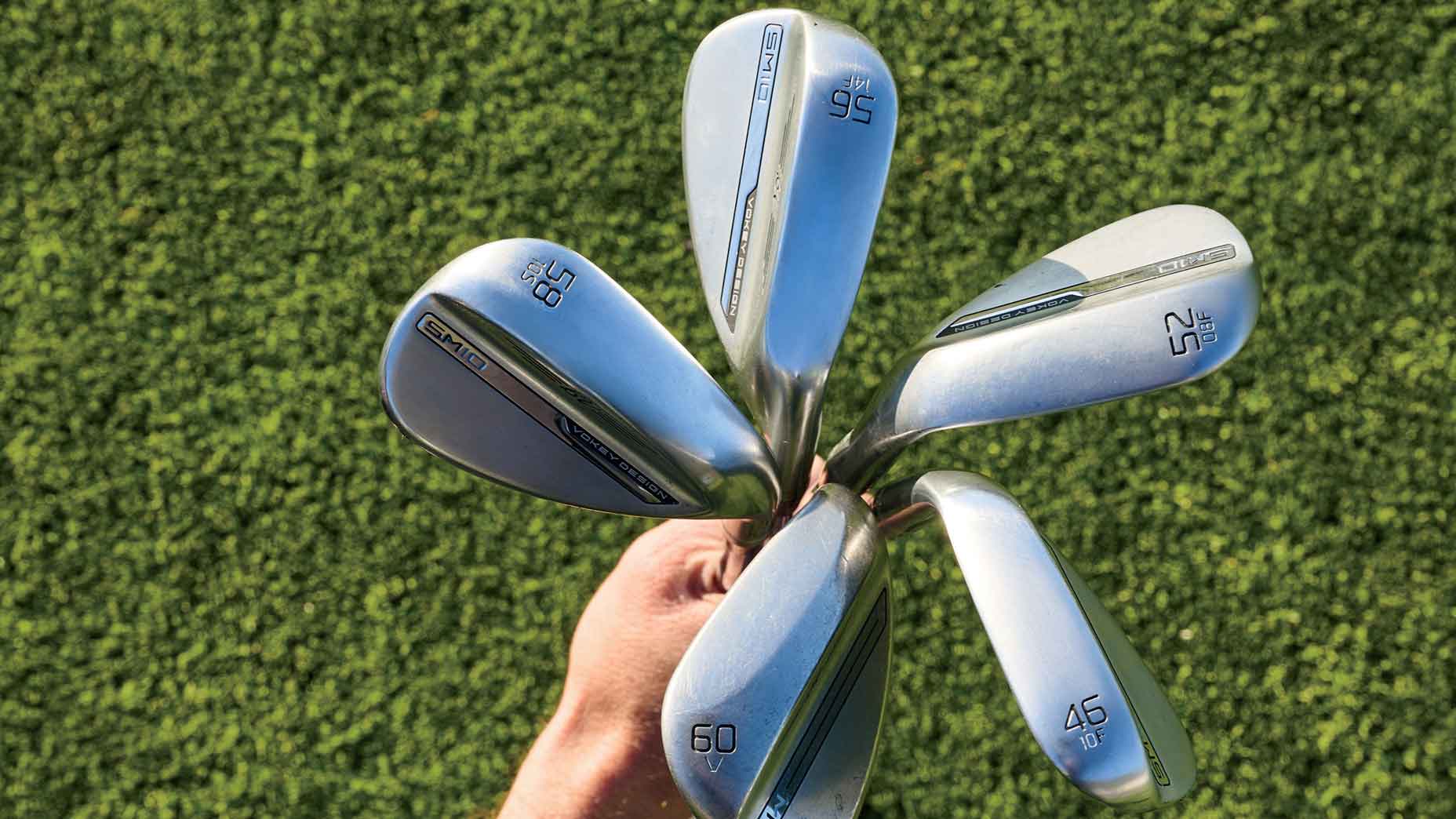The holy grail of equipment documents is housed inside an unmarked building on the outskirts of Fort Worth, Texas.
You wouldn’t know it from glancing at the pile of black binders balanced haphazardly atop a dusty filing cabinet. Countless more can be found inside the drawers, one nondescript black binder tucked against another. But, the burly Texan in charge tells you, these binders are different.
And then you catch a glimpse of a discolored label on one binder’s spine: “Tiger Woods Wedges and Putters.”
Oh. Open the top cover—gently now—and you’re greeted by a multitude of club build sheets with handwritten notes dating back to Woods’ Nike Golf days. The glory days. An era of six major championships, each won with Swoosh irons and wedges in hand. The notes are significant because they belong to (arguably) the greatest golfer to ever touch a club. They’re significant because Woods has never been one to freely offer up his club specs. The mystery was always part of the secret sauce.
“There’s more in the drawers,” says Mike Taylor, pointing to a few more binders, these with different names. Tommy Fleetwood. Charl Schwartzel. “A lot of history in those binders.”
Taylor should know. Many of the notes, dutifully taken down in pencil, belong to him.
There’s a good chance you’ve never heard of Mike Taylor, but that doesn’t make him any less significant than Roger Cleveland, Katsuhiro Miura, Bob Vokey or Don White—four well-known titans of the clubmaking world. For more than three decades, Taylor worked quietly behind the scenes for the Ben Hogan Golf Equipment Company, Impact Golf Technologies and Nike Golf, molding and shaping irons and wedges for some of the best in the sport. It wasn’t until Taylor started Artisan Golf with cofounder John Hatfield in 2017 that he fully stepped out from behind the curtain to become one of the faces of the Fort Worth–based wedge and putter start-up.
In an era where high-tech computers continue to take on more of the load in the golf club design space, Taylor is a throwback to a bygone era when irons and wedges were predominantly shaped by hand using a pencil and some imagination. Even today, Taylor still follows the same process, preferring to sketch instead of leaning heavily on CAD (computer-aided design) to turn his creations into reality.
Ask him to describe his procedure for creating the perfect transition from hosel to topline using only his eyes and otherworldly feel and he just shrugs.
“You ever seen Eric Clapton play guitar?” Taylor asks in his thick Texas drawl. “His fingers are moving, but it looks like he’s just not there. He’s just feeling his way through the moment. I feel like making clubs is the same way. This [puts his hand on the grind machine] is my guitar.”
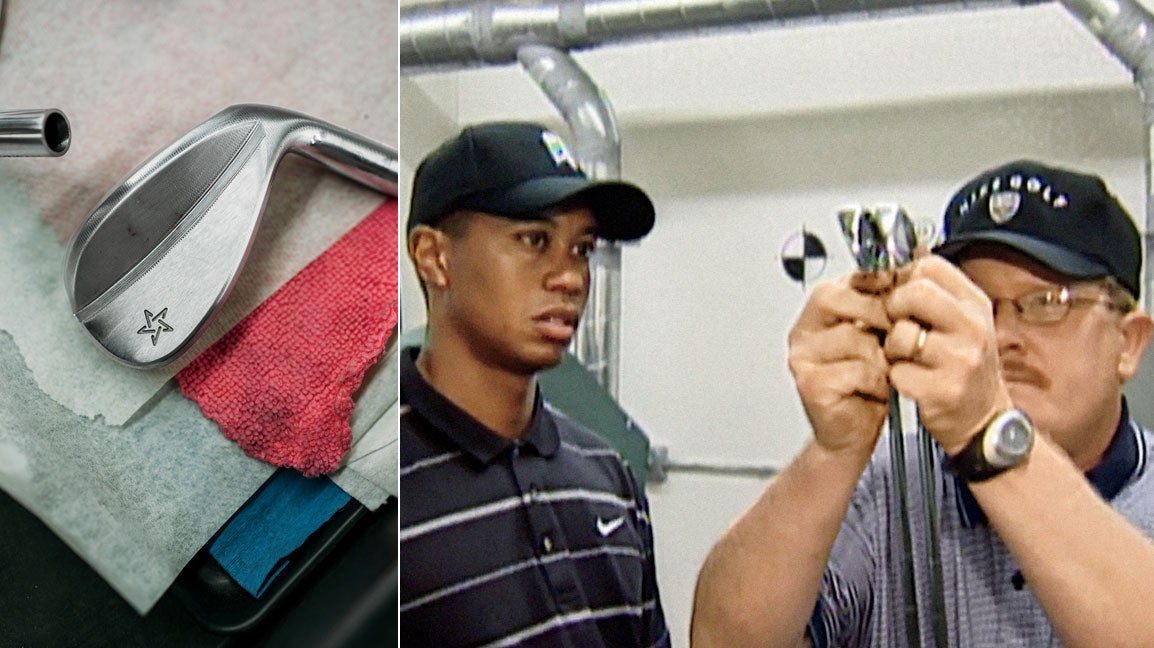
On still Saturday mornings, as most of Texas is slowly waking up, Taylor can be found in an aging workshop perfecting his craft. With the grind wheel whirring, he pulls up a stool, cranks up the Stevie Ray Vaughan on a stereo and gets to work, slowly and methodically kissing the sole of a wedge against the wheel to give it just the right amount of bounce to glide through the turf. It’s a process he’s gone through more times than he can count.
If you need proof, there’s a hulking metal locker with innumerable Nike wedges bearing the initials of players for whom initials are enough: “DD” (David Duval) and “PC” (Paul Casey) and “TW” (you know). Affirming his bona fides.
It’s during these fleeting moments when the shop is completely still that Taylor finds himself in what can only be described as a trance. The rest of the world fades into the background. All that remains is man and club.
“There have been times when I’ve come in the shop on Saturday and returned on Monday to take the cloth off the heads and I have no idea how they ended up like that,” he says. “I’ll pick them up and look them over—and they are absolute money. It’s not like you can look at an iron head or a wedge and know, Okay, I hit it three times there and I did this over here. That comes from some… maybe it’s a gift—you just follow your eyes and know what you’re looking for. If you don’t know what you’re looking for, you’re just moving metal, man.”
The whirring of the wheel and stillness in the shop is also where Taylor feels closest to his mentor, Gene Sheeley, who spent 30 years going through the same process while working for the Ben Hogan Golf Equipment Company, eventually becoming “Mister Hogan’s” personal clubmaker. It was a title Sheeley didn’t take lightly, as evidenced by the conversations Taylor observed between clubmaker and living legend during his time at the company.
“You could always tell when Mr. Hogan was on the phone because Gene would pick up a piece of paper and pencil and start taking notes,” Taylor says. “You’d hear Gene say, ‘Yes, Mr. Hogan,’ and you knew they were going to work. Gene was brilliant, and I know that he had certain influences on Mr. Hogan’s product. He always wanted to build the best possible product because it had [Hogan’s] name on it. For me, I think it was the same with Tiger.”
It was Sheeley, a decorated member of the Navy and Marines who fought in World War II and Korea, who took Taylor under his wing and instilled in him a love for club design and how to look at the tools with a critical eye—something Sheeley learned from working alongside Hogan for more than three decades.
While Sheeley has since passed on, his reverence for clubmaking still lives on in his apprentice.
What Taylor possesses in his worn, weathered hands is a gift. It’s one of the reasons why Woods, Duval, Bernhard Langer, Rory McIlroy and Jack Nicklaus, just to name a few, entrusted him to mold and shape clubs that played an integral part in their careers. The list is a who’s who of golfing royalty.
“Mike’s one of the most passionate and humble guys you’ll ever meet,” says Scott Kraul, who worked with Taylor at Nike for nearly four years. “To him, it’s never been about earning public recognition. He takes his work personally, meaning he feels like the product is a reflection of him.”
Taylor’s humble demeanor and dogged work ethic can be traced back to his parents, Ben and Sandra Taylor, who raised their son on a sprawling farm in the quiet town of Burnet, Texas, just northwest of Austin. The farming and ranching business was in Taylor’s blood, so most of his time growing up was spent tending to cattle, pigs, chickens, hauling massive bales of hay and swimming in the creek. Golf wasn’t even on the radar.
“I was raised pretty much a country boy,” Taylor says. “My parents were great people. They had an incredible sense of work ethic, and I learned from them growing up that the farm doesn’t survive unless we go to work.”
Taylor embraced life on the farm, but his grandmother Grace had other ideas for his future. Realizing the importance a college education could have on his career trajectory, she insisted her grandson continue his education after high school. Four years later, in 1987, Taylor graduated from Tarleton State University with a degree in engineering.
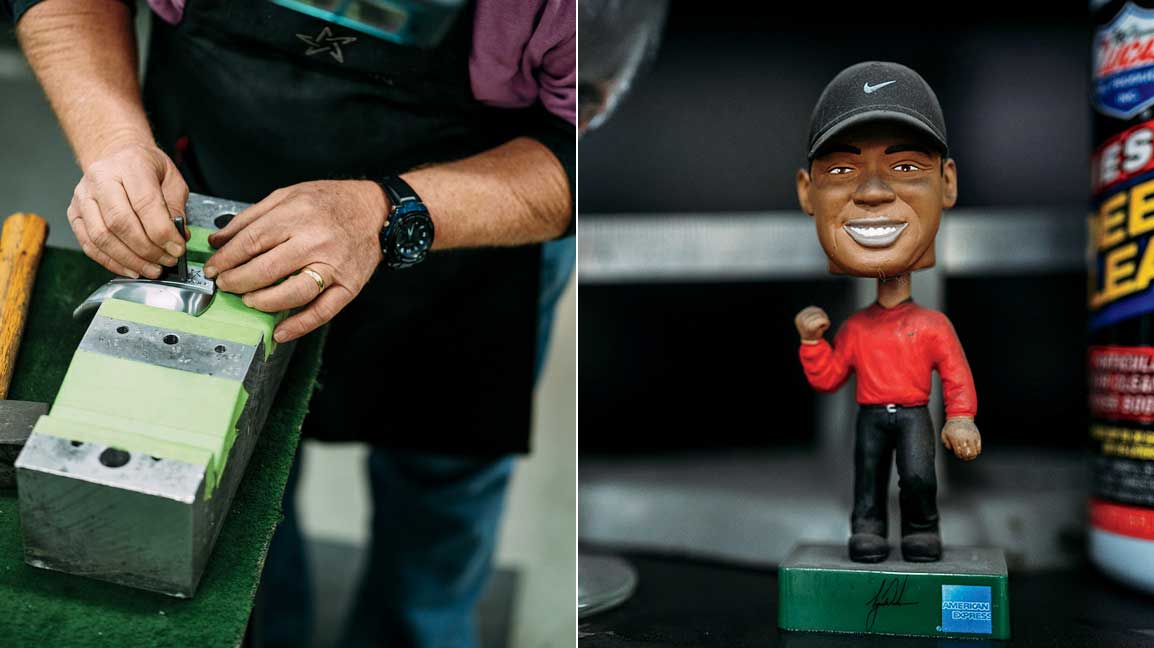
The first few months postgraduation were spent running an RV park just west of Fort Worth and working for Schaefer Mold, a manufacturing shop where he gained machining experience, as he looked for a job in the aerospace industry.
As Taylor bided his time, Tom Stites and the Ben Hogan Golf Equipment Company entered the picture in the summer of 1987. Stites had been at Hogan for only a little more than a year and didn’t have an ounce of club designing experience when he left his job designing plumbing products for the Kohler Company to take over as the head of Hogan’s model shop. But he had a plan to modernize the way the company created golf clubs.
Looking at Taylor’s résumé, Stites saw a lot of himself in the country boy from Burnet. No experience in the golf industry. Strong work ethic. Stites was sold, but his bosses balked.
“They thought Mike was too country to fit into the golf industry,” Stites says. “I wanted to hire him because he was a country farm boy who knew how to fix things and could do a little machining and CAD work. He had no background in golf, but he was extremely talented.”
Stites insisted, and Taylor proved him right: He was a natural for the machining position. In the forthcoming years, he played an important role in the creation of a number of Hogan’s most successful designs, most notably the 1988 Edge iron, which marked the first time an equipment company had been able to create a cavity-back forging.
“A lot of people see clubs differently than the other guys—because of eye dominance, hand position, other things,” says Stites. “What Mike was able to do was the art of interpreting the three-dimensional shapes. It’s very undefined. We did a lot of work on CAD, but there’s still a free art form of making these clubs look and appeal to the eye. I think Mike’s ability to use his hands and his eye in a way that’s repeatable is not the kind of thing you can teach a machine to do.”
When Ben Hogan was purchased by Virginia-based businessman Bill Goodwin in 1992, Taylor followed Stites to his recently created Impact Golf Technologies. It was there Taylor worked for the next eight years expanding his clubmaking skills before Nike Golf arrived, in 2001, acquiring the company in an attempt to ramp up prototype club production. It wasn’t long after Taylor began working for Nike that he started down a path that would define his career.
“To Mike, Thanks for finally making me a good wedge.” —Tiger. The signed magazine cover always delivers a chuckle from the clubmaker. Woods’ message was made with tongue placed firmly in cheek when he signed the memento, but of the numerous items bearing his initials or image inside Taylor’s cramped office quarters, this particular inscription offers a glimpse into the relationship he shares with the greatest golfer of the modern era.
Few members of Woods’ inner circle are as beloved and respected as Taylor, who forged an airtight bond with the 15-time major winner during their time at Nike Golf.
Years ago, during a Nike Golf commercial shoot at the build shop, Taylor recalled being asked to make the sparks fly by jamming a blank wedge against the grind wheel with Woods standing nearby. After Taylor was done making television magic, Woods leaned in to ask Taylor an important question: Was that one of his wedges that had just been put through the ringer?
“Of course it is,” Taylor deadpans. Woods’ eyes turned into saucers as he took in the news.
Taylor laughs when he thinks about a moment in time that perfectly encapsulates their relationship. Sure, there was a lot of work involved, but good-natured ribbing was part of the winning formula.
“Mikey T. is the best,” Woods said in 2017. “He trained with Hogan. He’s been through it. And he’s got such a unique ability to grind and have me tell him what I want and have him create it. Our communication is just fantastic.
“… With his southern accent, man, he’s talking about, ‘Man, perform through the dirt.’ So him talking like that, and his gyrations that he gets into—but he’s a master craftsman. He really is. He’s got a great feel and a great eye. Our rapport has been fantastic, but also, I have a lot of trust in Mike.”
It was Taylor who worked on all of Woods’ irons and wedges after he departed Titleist, including the first sets of Nike forged blade prototypes that followed the Titleist 681 “T” used to win the “Tiger Slam.” This was the iron set that laid the foundation for their working relationship.
The initial set of Nike irons were designed from scratch by Taylor using detailed notes from Woods about his wants and needs throughout the set. More bounce in the long irons to handle the way Woods hammered the head into the ground; a smoother sole progression from iron to iron—Taylor’s idea—to enhance consistent turf interaction.
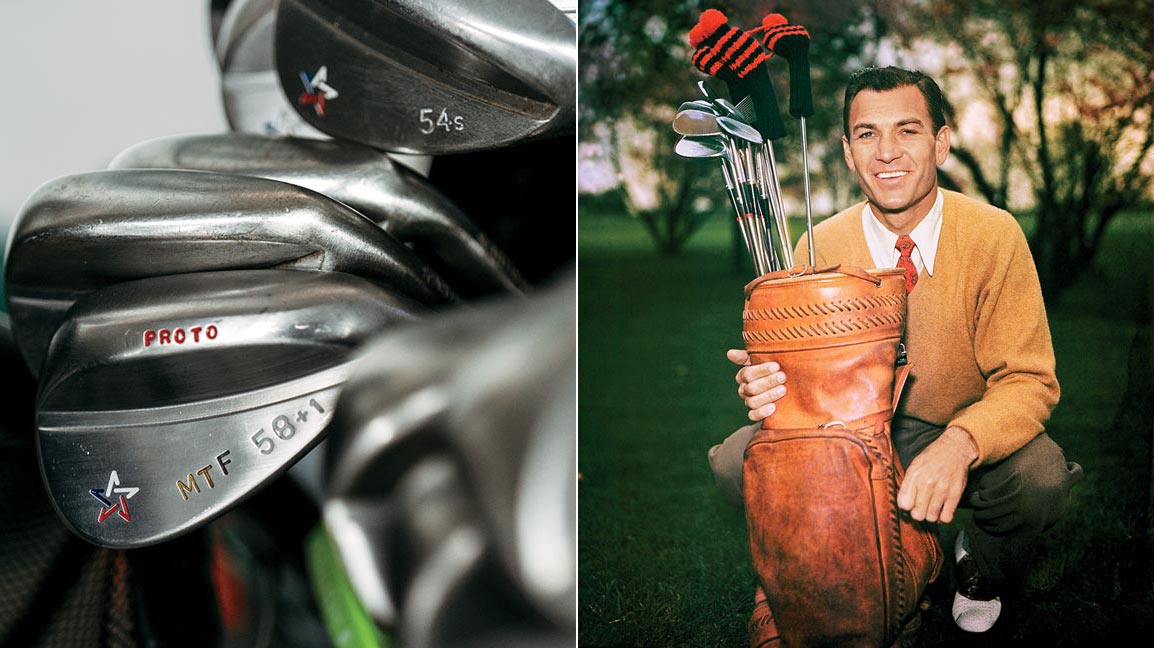
Taylor also cleaned up the overall profile and adjusted the offset, but when Woods tested the irons, something was amiss. The initial forgings from Chicago weren’t quite there in the feel department, so Taylor dug into his bag of tricks to remedy the problem.
What few know is that it was Taylor who came up with the idea to pump tungsten slugs into Woods’ iron heads, a trick he happened upon during the Impact Golf days. While Taylor couldn’t recall the exact year, he still remembers Stites encouraging the use of welding to enhance the prototyping and master model-making skills of the team.
So Taylor asked Stites to purchase a TIG (tungsten inert gas) welder he could use to fashion tungsten and steel together. In this case, strategic pieces of tungsten, cut from bar form, could alter the feel of the head—for the better, in Woods’ case—and had a secondary benefit of positioning the center of gravity in the middle of the face. Not bad for a set of Frankensteined irons.
Woods not only utilized tungsten in his irons at Nike, but also during his transition to TaylorMade, a testament to Taylor’s outside-the-box thinking. Since the early 2000’s, the bones of Woods’ irons haven’t changed.
The same can’t be said for the wedges, particularly the sole widths, which were hand-ground by Taylor to help Woods adjust to the ever-changing course conditions. He recalls having to routinely make upwards of eight sets of wedges for Woods, who blew through the grooves during his notoriously lengthy short-game sessions.
Taylor was riding high at Nike Golf, making clubs not only for Woods but seven other major winners, including Rory McIlroy. “It was like being Dale Earnhardt’s crew chief,” says Taylor of working alongside Woods and other members of Nike’s Tour staff. “You had the best seat in the house.”
And then came the bomb that not even Taylor saw coming: In late 2016, Nike announced it was shuttering its hard-goods business. It cleaned out the Fort Worth–based R&D building where Taylor and colleagues worked for more than a decade. The Swoosh was walking away from the equipment industry. Taylor was floored. He briefly considered walking away, too; he could spend more time fishing. But a group of colleagues convinced him to start Artisan, a fitting name given the nature of his life’s work.
With Nike in the rearview, Taylor has moved on to running things his way, using the skills he learned from Sheeley and the lessons from in-person testing sessions with Tiger and countless other professionals to create a waiting list for his wedges that’s a mile long.
Everyone wants to work with a living legend, especially one who continues to embrace a craft that only a handful on this earth have been able to master. Without an apprentice waiting in the wings to take up the clubmaking mantle, some who’ve worked with Taylor wonder what the future holds.
“He’s one of the last few who still makes clubs the old-school way,” says Kel Devlin, Nike Golf’s former senior global director of sports marketing. “The art of clubmaking is going to die with Mike Taylor.”
